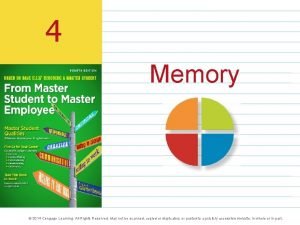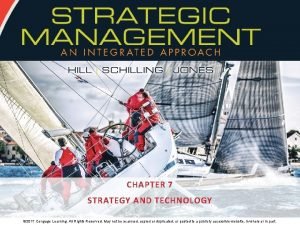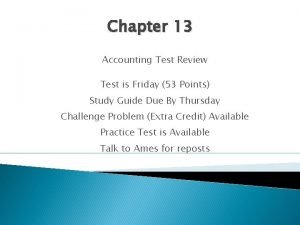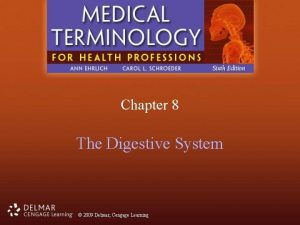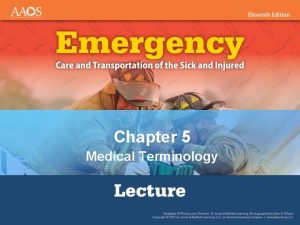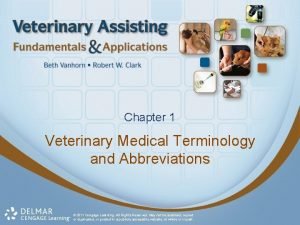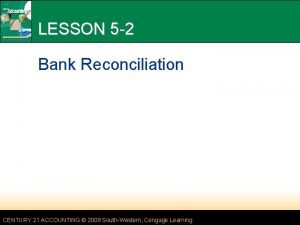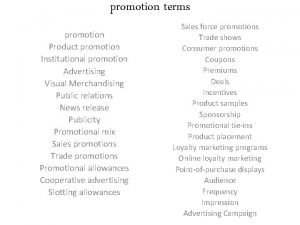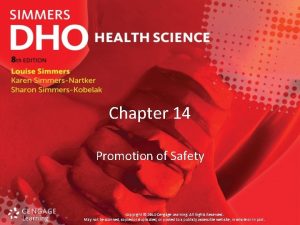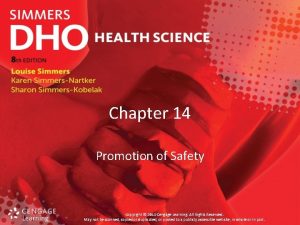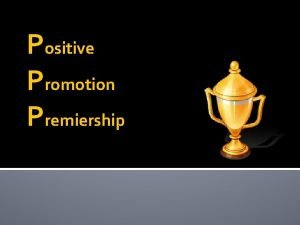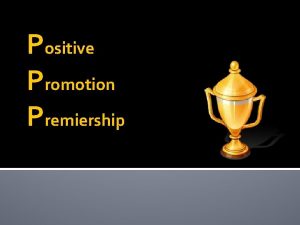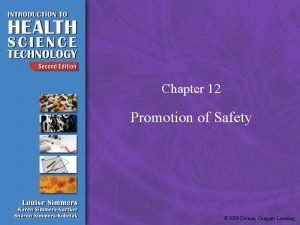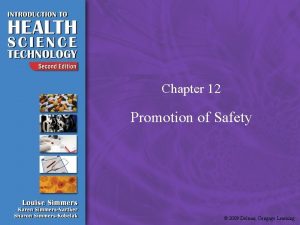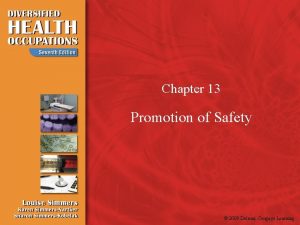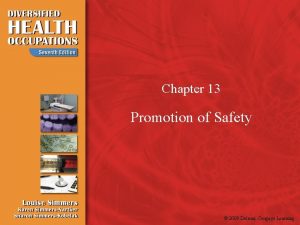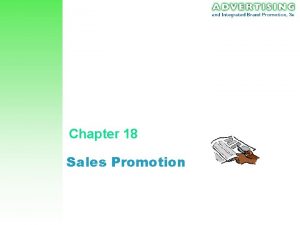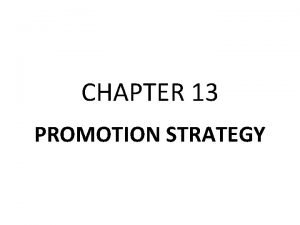Chapter 14 Promotion of Safety Copyright 2014 Cengage































- Slides: 31

Chapter 14 Promotion of Safety Copyright © 2014 Cengage Learning. All Rights Reserved. May not be scanned, copied or duplicated, or posted to a publicly accessible website, in whole or in part.

14: 1 Using Body Mechanics • Muscles work best when used correctly • Correct use of muscles makes lifting, pulling, and pushing easier • Correct body mechanics prevents unnecessary fatigue and strain and saves energy Copyright © 2014 Cengage Learning. All Rights Reserved. May not be scanned, copied or duplicated, or posted to a publicly accessible website, in whole or in part.

14: 1 Using Body Mechanics (continued) • Correct body mechanics prevents injury • Maintain a broad base of support • Bend from hips and knees to get close to an object • Use the strongest muscles to do the job • Use body weight to help push or pull an object Copyright © 2014 Cengage Learning. All Rights Reserved. May not be scanned, copied or duplicated, or posted to a publicly accessible website, in whole or in part.

14: 1 Using Body Mechanics (continued) • • Carry heavy objects close to the body Avoid twisting your body as you work Avoid bending for long periods of time Get help if a patient or object is too heavy to lift alone Copyright © 2014 Cengage Learning. All Rights Reserved. May not be scanned, copied or duplicated, or posted to a publicly accessible website, in whole or in part.

14: 1 Using Body Mechanics (continued) • Back supports – Required by some health care facilities – May provide false sense of security – Should be correct size in order to provide maximum benefit – Should fit snugly when needed, can be loosened at other times Copyright © 2014 Cengage Learning. All Rights Reserved. May not be scanned, copied or duplicated, or posted to a publicly accessible website, in whole or in part.

14: 2 Preventing Accidents and Injuries • Occupational Safety and Health Administration (OSHA) – Division of the Department of Labor – Establishes and enforces safety standards in the workplace Copyright © 2014 Cengage Learning. All Rights Reserved. May not be scanned, copied or duplicated, or posted to a publicly accessible website, in whole or in part.

14: 2 Preventing Accidents and Injuries (continued) • Two standards that affect health care workers: – Occupational Exposure to Hazardous Chemicals Standard – Bloodborne Pathogen Standard Copyright © 2014 Cengage Learning. All Rights Reserved. May not be scanned, copied or duplicated, or posted to a publicly accessible website, in whole or in part.

Chemical Hazards • Occupational Exposure to Hazardous Chemicals Standard – Requires employers to inform employees of all chemicals and hazards in workplace – Training for employees on procedures and policies Copyright © 2014 Cengage Learning. All Rights Reserved. May not be scanned, copied or duplicated, or posted to a publicly accessible website, in whole or in part.

Chemical Hazards (continued) • All manufacturers must provide Material Safety Data Sheets (MSDSs) with any hazardous product they sell – Specific information has to be provided on the MSDS related to protection, precautions, and procedures Copyright © 2014 Cengage Learning. All Rights Reserved. May not be scanned, copied or duplicated, or posted to a publicly accessible website, in whole or in part.

Bloodborne Pathogen Standard • Contains mandates to protect health care providers from diseases caused by exposure to body fluids • Diseases that can be contracted by exposure to body fluids include hepatitis B, hepatitis C, and AIDS Copyright © 2014 Cengage Learning. All Rights Reserved. May not be scanned, copied or duplicated, or posted to a publicly accessible website, in whole or in part.

Environmental Safety • Ergonomics – Applied science to promote safety and well-being of a person by adapting environment and using techniques to prevent injuries Copyright © 2014 Cengage Learning. All Rights Reserved. May not be scanned, copied or duplicated, or posted to a publicly accessible website, in whole or in part.

Environmental Safety (continued) • Ergonomics (continued) – Correct placement of furniture and equipment – Training in muscle movements – Efforts to avoid repetitive motions – Awareness of the environment to prevent injuries Copyright © 2014 Cengage Learning. All Rights Reserved. May not be scanned, copied or duplicated, or posted to a publicly accessible website, in whole or in part.

Environmental Safety (continued) • Concerns include – Accident or injury – Radiation or mercury exposure – Contaminated wastes • Health care workers have a legal responsibility to protect patients from harm and injury Copyright © 2014 Cengage Learning. All Rights Reserved. May not be scanned, copied or duplicated, or posted to a publicly accessible website, in whole or in part.

Equipment and Solutions Safety (continued • Do not operate or use any equipment until you have been trained to use it • Read and follow operating instructions • Do not operate equipment without presence of instructor/supervisor • Report damaged or malfunctioning equipment Copyright © 2014 Cengage Learning. All Rights Reserved. May not be scanned, copied or duplicated, or posted to a publicly accessible website, in whole or in part.

Equipment and Solutions Safety (continued) • Do not use frayed or damaged electrical cords • Never handle electrical equipment with wet hands • Store equipment properly • Observe all safety precautions for equipment • Read MSDSs for hazardous chemical solutions Copyright © 2014 Cengage Learning. All Rights Reserved. May not be scanned, copied or duplicated, or posted to a publicly accessible website, in whole or in part.

Equipment and Solutions Safety (continued • Check NFPA codes • Never use solutions that are from unlabeled bottles • Read labels at least three times • Do not mix solutions unless instructed Copyright © 2014 Cengage Learning. All Rights Reserved. May not be scanned, copied or duplicated, or posted to a publicly accessible website, in whole or in part.

Equipment and Solutions Safety (continued) • Avoid solution contact with eyes/skin • Store chemicals in locked cabinet following manufacturers’ recommendations • Dispose of chemical solutions according to MSDS • Report broken equipment or spilled solutions Copyright © 2014 Cengage Learning. All Rights Reserved. May not be scanned, copied or duplicated, or posted to a publicly accessible website, in whole or in part.

Patient/Resident Safety • Do not perform any procedure on patients unless instructed and authorized • Provide privacy for all patients • Identify your patient • Explain the procedure Copyright © 2014 Cengage Learning. All Rights Reserved. May not be scanned, copied or duplicated, or posted to a publicly accessible website, in whole or in part.

Patient/Resident Safety (continued) • Observe patient closely during any procedure • Check all areas for safety hazards • Before leaving a patient, observe all safety checkpoints Copyright © 2014 Cengage Learning. All Rights Reserved. May not be scanned, copied or duplicated, or posted to a publicly accessible website, in whole or in part.

Personal Safety • Protect yourself and others from injury • Use correct body mechanics • Wear the required personal protective equipment (PPE) • Walk; do not run • Report any injury or accident Copyright © 2014 Cengage Learning. All Rights Reserved. May not be scanned, copied or duplicated, or posted to a publicly accessible website, in whole or in part.

Personal Safety (continued) • • • Report unsafe situations or safety violations Keep all areas neat and clean Wash hands frequently Keep hands away from face, eyes, mouth, hair Dry hands thoroughly before handling electrical equipment Copyright © 2014 Cengage Learning. All Rights Reserved. May not be scanned, copied or duplicated, or posted to a publicly accessible website, in whole or in part.

Personal Safety (continued) • Wear safety glasses when appropriate • Observe all safety precautions • If solution comes in contact with skin or eyes, flush immediately with cool water and report • If particle gets in eye, report immediately – Do not try to remove or rub eye Copyright © 2014 Cengage Learning. All Rights Reserved. May not be scanned, copied or duplicated, or posted to a publicly accessible website, in whole or in part.

14: 3 Observing Fire Safety • Fire requires – Oxygen—found in the air – Fuel—any material that will burn – Heat—sparks, matches, flames • Major cause of fires is carelessness with smoking and matches Copyright © 2014 Cengage Learning. All Rights Reserved. May not be scanned, copied or duplicated, or posted to a publicly accessible website, in whole or in part.

Fire Extinguishers • Classified and labeled according to kind of fire they extinguish • Main classes – Class A: for combustibles (paper, cloth, plastic, wood) – Class B: for flammable or combustible liquids (gasoline, paint, grease, cooking fat) Copyright © 2014 Cengage Learning. All Rights Reserved. May not be scanned, copied or duplicated, or posted to a publicly accessible website, in whole or in part.

Fire Extinguishers (continued) • Main classes (continued) – Class C: for electrical fires such as fuse boxes, appliances, wiring, and electrical outlets (the C stands for nonconductive) – Class D: for burning or specific combustible metals • Refer to Figure 14 -10 in Text Copyright © 2014 Cengage Learning. All Rights Reserved. May not be scanned, copied or duplicated, or posted to a publicly accessible website, in whole or in part.

Fire Extinguishers (continued) • The main types include – Water – Carbon dioxide – Dry chemical – Halon Copyright © 2014 Cengage Learning. All Rights Reserved. May not be scanned, copied or duplicated, or posted to a publicly accessible website, in whole or in part.

Fire Emergency Plan • Remain calm; do not panic • RACE – R: rescue anyone in immediate danger – A: activate the alarm – C: confine the fire – E: extinguish the fire Copyright © 2014 Cengage Learning. All Rights Reserved. May not be scanned, copied or duplicated, or posted to a publicly accessible website, in whole or in part.

Fire Emergency Plan (continued) • Preventing fires – Obey “No Smoking” signs – Extinguish matches, cigarettes, and flammable items completely – Dispose of all waste materials in proper containers Copyright © 2014 Cengage Learning. All Rights Reserved. May not be scanned, copied or duplicated, or posted to a publicly accessible website, in whole or in part.

Fire Emergency Plan (continued) • Preventing fires (continued) – Handle electrical equipment carefully; check for damaged cords/improper grounding before use – Store flammable materials in proper containers and in a safe area; immediately wipe up spills of flammable liquids Copyright © 2014 Cengage Learning. All Rights Reserved. May not be scanned, copied or duplicated, or posted to a publicly accessible website, in whole or in part.

Fire Emergency Plan (continued) • Preventing fires (continued) – Do not allow clutter to accumulate – When oxygen is in use, observe special precautions Copyright © 2014 Cengage Learning. All Rights Reserved. May not be scanned, copied or duplicated, or posted to a publicly accessible website, in whole or in part.

Disaster Plans • Disasters include tornadoes, hurricanes, earthquakes, floods, bomb threats • Stay calm and follow health care facility procedures • Provide for safety of self and patients • Be familiar with disaster policies Copyright © 2014 Cengage Learning. All Rights Reserved. May not be scanned, copied or duplicated, or posted to a publicly accessible website, in whole or in part.
 2014 cengage learning accounting answers
2014 cengage learning accounting answers 2014 cengage learning
2014 cengage learning Copyright cengage learning. powered by cognero
Copyright cengage learning. powered by cognero Copyright 2014 pearson education inc
Copyright 2014 pearson education inc Chapter 14:1 using body mechanics
Chapter 14:1 using body mechanics The human respiratory system chapter 7 handout
The human respiratory system chapter 7 handout Cengage chapter 7
Cengage chapter 7 Chapter 13 medical math
Chapter 13 medical math Cengage accounting chapter 13 test answers
Cengage accounting chapter 13 test answers Chapter 5 learning exercises medical terminology
Chapter 5 learning exercises medical terminology Cengage chapter 8 answers
Cengage chapter 8 answers Alges root word
Alges root word Cengage chapter 4 answers
Cengage chapter 4 answers Prescription terms
Prescription terms Safety promotion sms
Safety promotion sms Cengage differential equations
Cengage differential equations Century 21 bank
Century 21 bank Cengage differential equations
Cengage differential equations 2009 delmar cengage learning
2009 delmar cengage learning Cengage learning heart diagram
Cengage learning heart diagram Cengage
Cengage Cengage
Cengage Cengage
Cengage South-western cengage learning
South-western cengage learning Cengage
Cengage Cengage
Cengage Cengage
Cengage 2009 delmar cengage learning
2009 delmar cengage learning Cengage learning heart diagram
Cengage learning heart diagram 1/52 medical terminology
1/52 medical terminology Cengage learning australia
Cengage learning australia Graphing tpr
Graphing tpr

